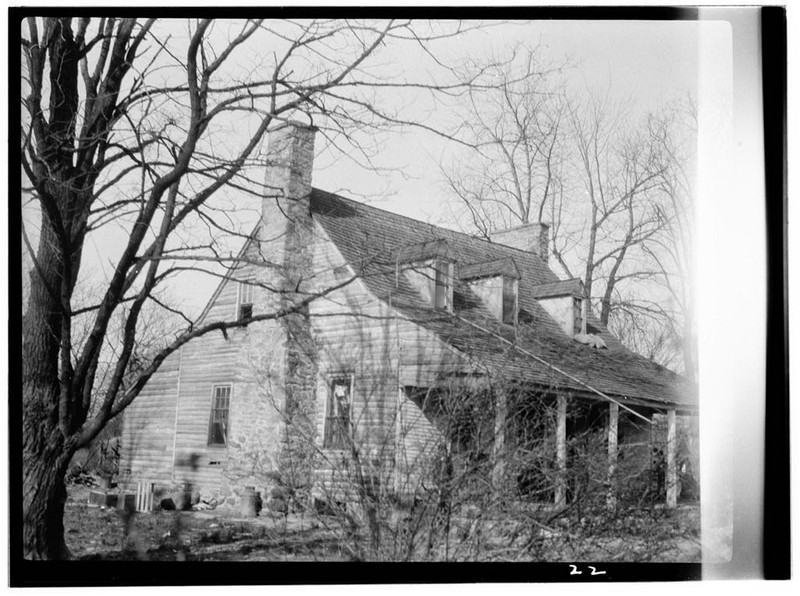Mount Gilead
Introduction
Text-to-speech Audio
Images
View of exterior of Mount Gilead house in 1930s from HABS documentation

Backstory and Context
Text-to-speech Audio
Mount Gilead is one of the oldest surviving structures in western Fairfax County and the only building left from the town of Centreville's era as a village called "Newgate." The property, of nearly 7 acres surrounding the house, is within the Centreville Historic Overlay District of Fairfax County. Mount Gilead is thought to have been built by Joel Beach around 1785. Beach advertised the house as a tavern in 1786 at the "sign of a Black Horse" and offered accommodations. To contrast with the nearby tavern named Newgate, Beach touted his establishment as "new and elegant" and prohibited all forms of gaming so as to "keep a still orderly house, for the use of travelers." The building was purchased in 1789 by Francis Adams who resided in the home. The property became part of the Village of Centreville, established in 1792.
A local tanner named Malcolm Jamesson leased a tan yard from heirs of Adams and rented the Mount Gilead house by the 1830s. Jamesson bought the property in 1842 and owned the house for the next 90 years. The home is one of two local buildings that may have served as the headquarters of Confederate General Joseph E. Johnston at some point during the Civil War (most likely the other structure was the real headquarters). Extensive defensive earthworks were constructed throughout Centreville, remnants of which survive on the property. The town changed hands between Northern and Southern forces multiple times during the conflict.
Mount Gilead is a two-story frame dwelling with three dormer windows piercing both sides of the roof. The Jamesson family cemetery is on the grounds. The house was restored in the mid-1930s by owner Alvin Detweiler and the historic back of the house became the front. Detweiler also built a garage in a colonial revival style and added garden features to the landscape. East and west wings were added to the home in 1955 and 1960. The house is now owned by the Fairfax County Park Authority and leased as a private residence.
Sources
Frear, Sherry. Mount Gilead Master Plan, Public Information Meeting, November 28, 2006. Slide presentation. Fairfax County Park Authority, Fairfax, VA. Electronic version: http://www.fairfaxcounty.gov/parks/plandev/mtgilead.htm. Accessed July 23rd 2014.
Marker, Spencer. Centreville's Hidden Heritage: A Driving Tour, Local History. January 1st 2017. Accessed November 3rd 2019. http://www.seln4u.com/local-history/.
Robison, Debbie. Mount Gilead, c. 1785, Northern Virginia History Notes. Undated. Accessed November 3rd 2019. http://www.novahistory.org/Centreville_Mount_Gilead.html.
https://cdn.loc.gov/service/pnp/habshaer/va/va0400/va0406/photos/161305pv.jpg
